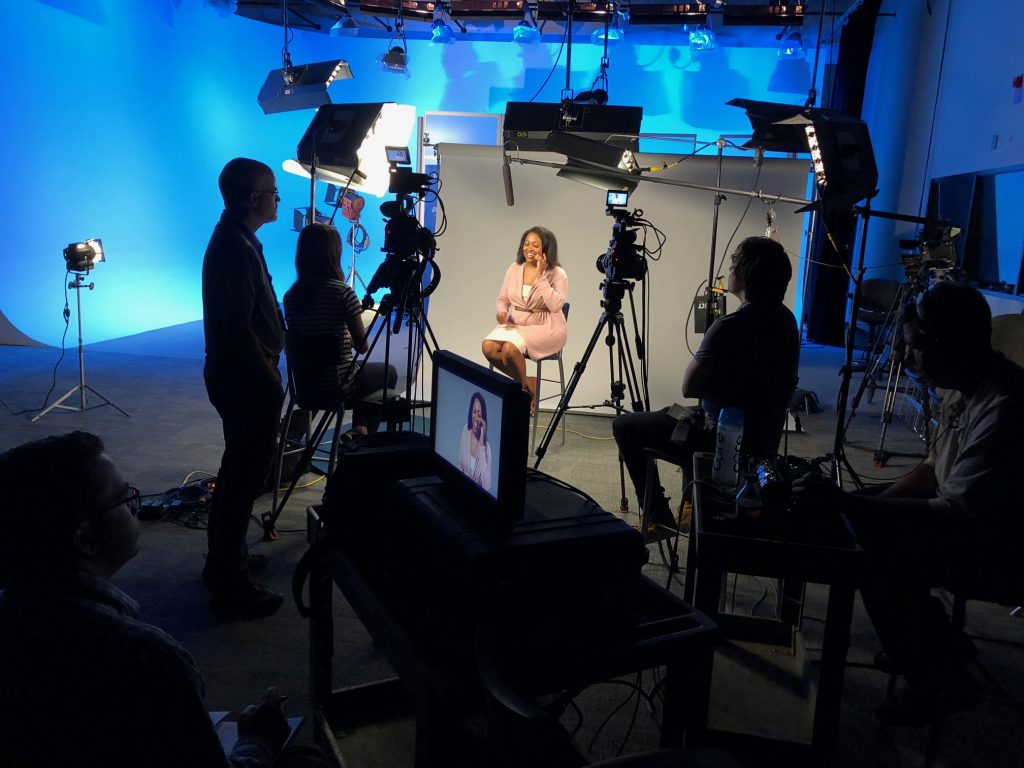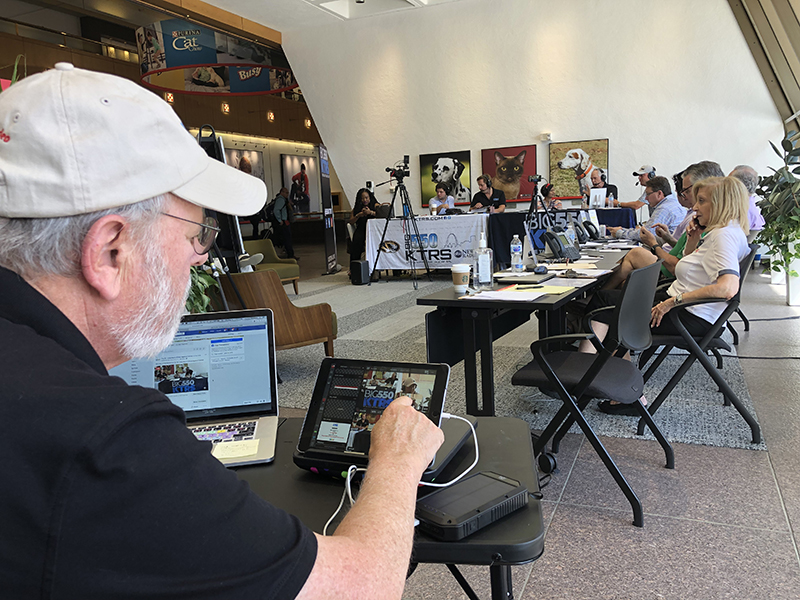Views: 575
In the world of commercial photography and video production, there are countless moving parts that need to come together seamlessly to create a successful project. Whether you’re shooting interviews, capturing B-roll footage, or both, assembling the right production crew is absolutely essential. Each member of your crew plays a crucial role in ensuring that your final product is not only visually stunning but also effectively conveys your message. Often the roles are combined to one or two people depending upon the overall size of the production and the crew that are needed.
In this comprehensive guide, we’ll delve into the key roles within a production crew, highlighting the responsibilities, skills, and expertise required for each position. Understanding these roles will help you plan and execute your photography and video projects more effectively, whether you’re working with an in-house team or hiring a professional production company like Stream-It.
The Director
Role: The director is the creative visionary behind the project, responsible for conceptualizing the overall look and feel of the video or photography project. They work closely with the client to understand their goals and objectives, and then translate those into a cohesive visual plan.
Skills and Expertise: Directors need a strong understanding of visual storytelling, shot composition, and a keen eye for detail. They should be able to effectively communicate their vision to the entire crew and ensure that the project stays on track.
The Producer
Role: Producers are responsible for the logistical aspects of the project, including budgeting, scheduling, and coordination. They work closely with the director to ensure that everything runs smoothly from start to finish.
Skills and Expertise: Producers need excellent organizational and project management skills. They should be able to handle multiple tasks simultaneously and adapt to unexpected changes in the production schedule.

The Director of Photography (DP)
Role: The DP is in charge of the camera and lighting departments, overseeing the visual aspects of the project. They work closely with the director to execute the visual plan and ensure that the footage or images are of the highest quality.
Skills and Expertise: DPs need a deep understanding of camera technology, lighting techniques, and composition. They should be able to make creative decisions on the spot to achieve the desired look.
The Camera Operator
Role: Camera operators are responsible for operating the camera during the shoot. They work closely with the DP to capture the shots as planned, adjusting focus, exposure, and framing as necessary.
Skills and Expertise: Camera operators need a strong technical understanding of camera equipment and should be skilled at capturing steady, well-framed shots. They should also be able to follow direction from the DP and director.
The Sound Engineer
Role: Sound engineers are in charge of recording high-quality audio during the shoot. They use microphones and recording equipment to capture clear and crisp sound.
Skills and Expertise: Sound engineers need a deep understanding of audio technology, including microphones, recorders, and post-production sound editing. They should also be skilled at troubleshooting audio issues on set.
The Lighting Technician
Role: Lighting technicians are responsible for setting up and controlling the lighting on the set. They work closely with the DP to create the desired mood and look for the project.
Skills and Expertise: Lighting technicians need a strong understanding of lighting equipment and techniques. They should be able to adjust the lighting to achieve the desired look and mood for each shot.
The Production Assistant (PA)
Role: Production assistants provide support to the entire crew, handling various tasks such as setting up equipment, running errands, and ensuring that everything on set runs smoothly.
Skills and Expertise: PAs need to be adaptable and willing to take on a variety of tasks. They should be organized, detail-oriented, and able to work efficiently under pressure.

The Editor
Role: The editor is responsible for assembling the raw footage or images into a coherent final product. They work closely with the director and client to ensure that the project meets the desired vision.
Skills and Expertise: Editors need strong technical skills in editing software, as well as a creative eye for storytelling. They should be able to work efficiently and meet deadlines.
The Colorist
Role: Colorists are responsible for color correction and grading, ensuring that the final product has a consistent and polished look. They work closely with the director and editor to achieve the desired color palette.
Skills and Expertise: Colorists need a deep understanding of color theory and color grading software. They should be able to enhance the visual appeal of the project through color correction.
The Motion Graphics Designer
Role: Motion graphics designers create animations and visual effects to enhance the video project. They work closely with the director and editor to incorporate graphics seamlessly into the final product.
Skills and Expertise: Motion graphics designers need proficiency in animation software and a creative flair for designing engaging visual elements.
The Makeup Artist and Stylist
Role: Makeup artists and stylists ensure that the talent looks their best on camera. They work on hair, makeup, and wardrobe to achieve the desired look for the project.
Skills and Expertise: Makeup artists and stylists need a strong understanding of makeup techniques and fashion trends. They should be able to work with different skin tones and styles to achieve the desired appearance.
The Talent
Role: Talent includes actors, presenters, or interviewees who appear on camera. They play a crucial role in conveying the message of the project and engaging the audience.
Skills and Expertise: Talent should be skilled in delivering lines, presenting information, or conveying emotions on camera. They should also be able to take direction from the director.
Conclusion
A successful photography and video production project relies on the expertise and collaboration of a dedicated production crew. Each member of the crew has a specific role and set of skills that contribute to the overall success of the project. Whether you’re shooting interviews, capturing B-roll footage, or both, understanding the essential roles within a production crew is key to achieving your goals.
Stream-It is a full-service professional commercial photography and video production company with a team of experienced professionals who excel in these roles. We offer full-service studio and location video and photography, as well as editing and post-production services. Our crew is well-versed in all file types and styles of media, and we use the latest software and equipment to deliver outstanding results.
If you’re looking for a partner to help you with your corporate photography and video needs in the St. Louis area, Stream-It is here to help. We’ve worked with many businesses, marketing firms, and agencies, and we have the expertise to customize your productions for diverse types of media requirements. Don’t miss the opportunity to leverage the power of professional photography and video for your brand. Contact Stream-It today to discuss your project and take the next step toward success.
Stream-It: Your Partner for Professional Photography and Video Production in St. Louis.
Call Mike Haller at 314-913-5626 for further information on how our Stream-It Crew can help you at your next streaming event. Or email us: stlouisvideos@gmail.com

